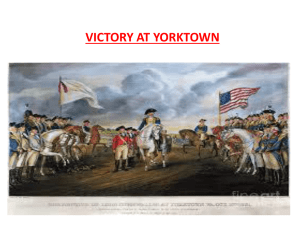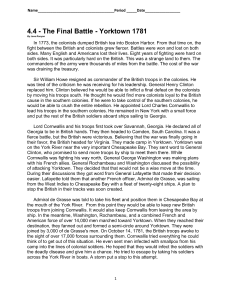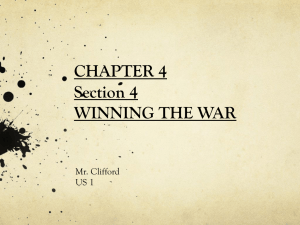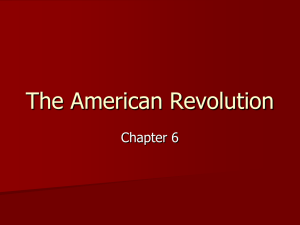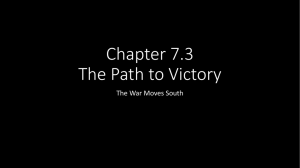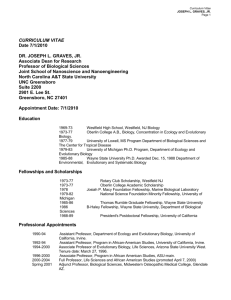The Battle Off the Virginia Capes - The Hudson River Valley Institute
advertisement
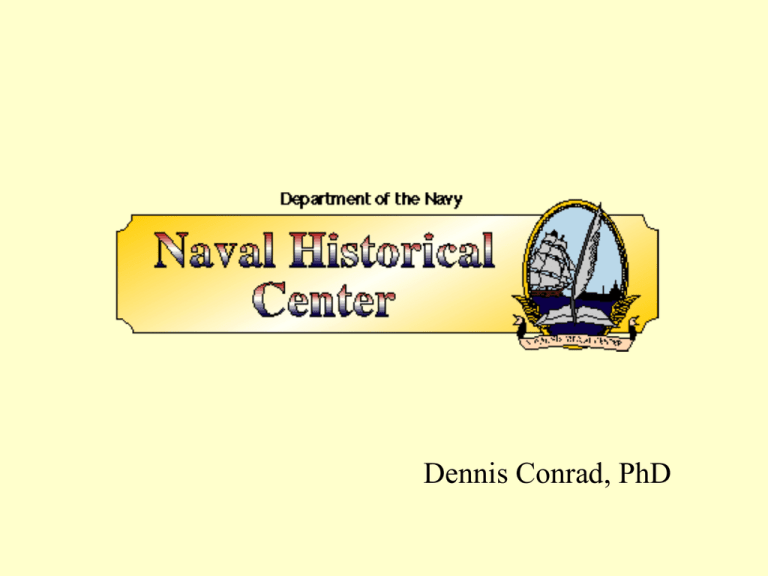
Dennis Conrad, PhD Disclaimer: The opinions expressed in this presentation are those of the presenter and do not represent an official position of the Department of the Navy THE BATTLE OFF THE VIRIGNIA CAPES: THE KEY MOMENT IN THE ALLIED VICTORY AT YORKTOWN Victory at Yorktown Cornwallis Fateful Decisions Rochambeau De Grasse Rodney British Miscalculations • Divided land forces outside range of mutual support • Believed they would always maintain naval superiority in North America Intelligence from Admiral Barras • Gen. Rochambeau to incorporate corps with Gen. Washington’s army • Barras to command French squadron at Newport • de Grasse to send part of West Indies squadron north in July or August The Allies’ Options • New York • Virginia The British in Virginia • Spring 1781, Cornwallis enters Virginia • July, Clinton orders Cornwallis to occupy a seaport • July, Cornwallis occupies Yorktown Spain Cooperates • Hurricane season postpones Spanish operations • Spain releases French troops for a time • Saint-Simon submits to Rochambeau’s orders • Spanish ships guard French merchant fleet • Spanish at Havana advance war chest Forces in Motion • • • • Washington and Rochambeau march south de Grasse and Hood sail north Rodney goes home Clinton and Graves plan to move against Newport • Barras sails from Newport • Hood and Graves sail in search of Barras The Battle off the Virginia Capes The Comte de Grasse in the Chesapeake • 30 Aug. 1781: 28 French ships of the line enter the Chesapeake • 2 Sept.: French land 3,300 soldiers on the shores of the James R. • 5 Sept.: Scouting vessel reports strange fleet • 11:30 A.M.: 24 French ships of the line cut their cables and stand out to sea The Decision not to Fight Inside the Capes • Graves might enter the Chesapeake and molest the allied armies without defeating de Grasse • Barras’s squadron with the allied siege artillery would be endangered Strategic Imperatives de Grasse • had to fight Graves so that Barras could enter the Chesapeake • did not have to defeat Graves Graves • unaware of Cornwallis’s extreme danger • under no compulsion to risk everything • may have assumed that Barras had already joined de Grasse Bougainville The Lost Opportunity • French fleet straggles out in bad order • French van separates from the center • Graves ignores opportunity to attack a portion of the French line • Graves intent on fighting in line-ahead formation Line Ahead Formation British Fleet Wears Together Methods of Closing from Windward • All ships turns at right angles, bear down on enemy, luff up to reform line of battle • Maintain line ahead with lead ship bearing obliquely toward enemy, resuming parallel position at proper distance • Each warship turns obliquely in its position, comes down with wind on its quarter, resuming parallel line at proper distance All ships turn at right angles, bear down on enemy, luff up to reform line of battle Maintain line ahead with lead ship bearing obliquely toward enemy, resuming parallel position at proper distance Each ship turns obliquely in its position, comes down with wind on its quarter, resuming parallel line at proper distance The van is unsupported, the center bunched up, and the rear out of the action The leeward fleet (bottom), by increasing sail, brings the van of the windward fleet (top) to engage unsupported Confused Signals Hood Allied Victory • British plan amphibious landing to relieve Cornwallis—too little, too late • Cornwallis surrenders Sept. 19 Sea Power Decisive local superiority at sea, attained through the cooperation of three allies, sealed the fate of the British Army at Yorktown. British strategy had assumed a continuity of naval superiority. When the British lost that, they lost America.
